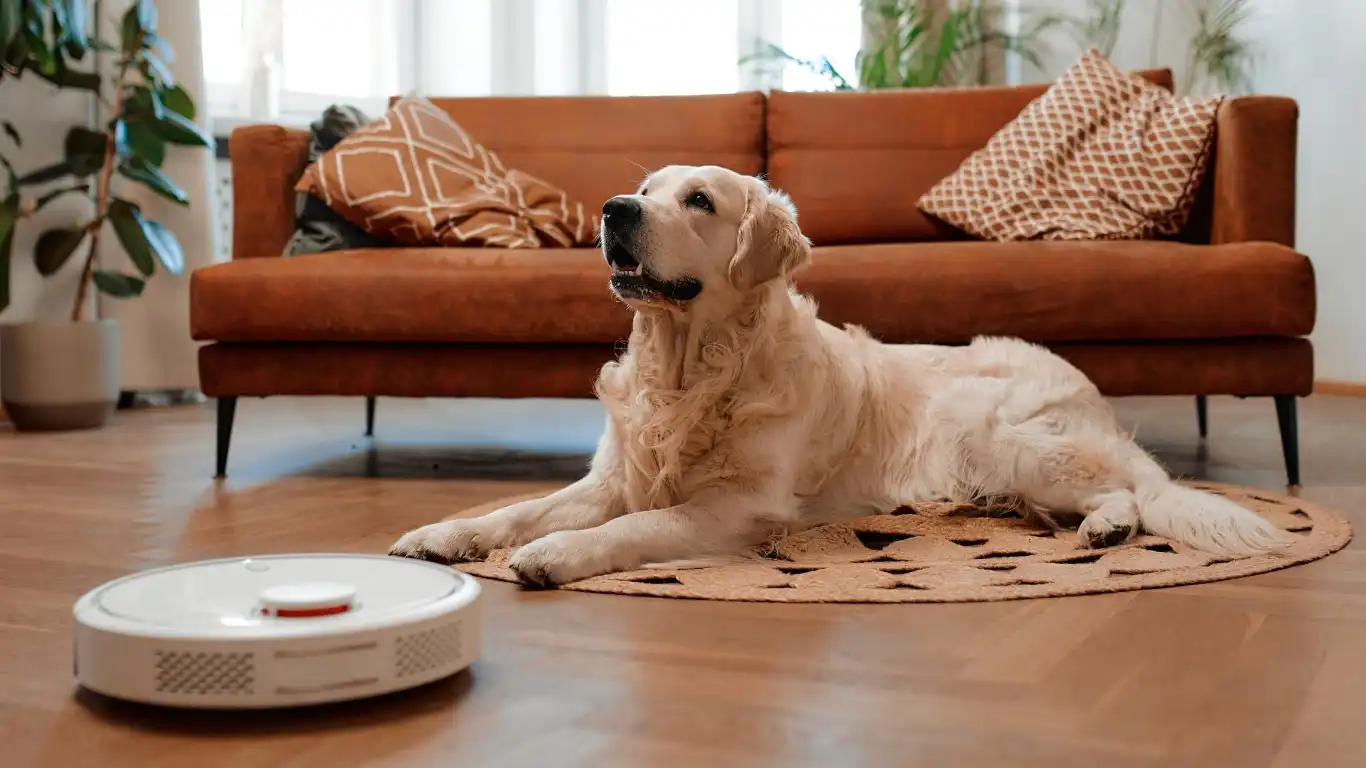How to Help a Senior Dog with Mobility Issues – Tips for Comfort
As a Pet Nutritionist and pet care expert with years of experience working in veterinary clinics, I’ve seen firsthand how much senior dogs can struggle with mobility issues as they age. These precious companions, who once had boundless energy, can find it difficult to keep up with their younger counterparts. But don’t worry! With the right approach, we can help ease their discomfort and improve their quality of life. In this guide, we’ll talk about how to help a senior dog with mobility issues, drawing on both my professional experience and a bit of my personal journey working with pet owners and their senior dogs.
Understanding Mobility Issues in Senior Dogs

When we think about our aging dogs, mobility issues often come to mind. It’s common for older dogs to experience arthritis, hip dysplasia, and other joint-related problems that make moving around more difficult. These issues not only cause discomfort but can also affect your dog’s overall well-being, leading to changes in behavior, such as reluctance to exercise, reluctance to go up or down stairs, or even becoming more withdrawn.
As a pet care expert, one thing I’ve noticed is that many owners don’t fully understand the extent of their senior dog’s discomfort until it becomes quite severe. The earlier you spot signs of pain or difficulty moving, the better equipped you’ll be to provide relief and enhance their quality of life.
Common Causes of Mobility Issues in Senior Dogs
In my experience, the most common causes of mobility issues in senior dogs are:
- Arthritis – Just like in humans, arthritis is a leading cause of pain and stiffness in older dogs. It often affects the joints, especially the hips, knees, and elbows.
- Hip Dysplasia – This is a genetic condition that causes abnormal development of the hip joint, leading to pain and difficulty walking.
- Intervertebral Disc Disease (IVDD) – This occurs when the discs in your dog’s spine slip or degenerate, which can lead to nerve damage and severe pain.
- Muscle Atrophy – As dogs age, their muscles tend to weaken, which can make it harder for them to move around and maintain balance.
- Obesity – Excess weight places additional strain on your dog’s joints, exacerbating mobility problems.
Recognizing these conditions early on is crucial to managing your dog’s discomfort and taking steps to improve their mobility. But don’t worry! You don’t have to face this challenge alone. There are many ways you can help your senior dog feel better and get moving again.
How to Help a Senior Dog with Mobility Issues

So, how can we help our senior dogs overcome these mobility challenges? It starts with a combination of lifestyle changes, home modifications, and professional care. Let’s dive into some effective ways to support your senior dog.
1. Visit the Vet for a Thorough Check-up
First things first: a trip to the vet. In my experience, many dog owners don’t realize that mobility issues in dogs often stem from underlying health conditions that need proper diagnosis and treatment. It’s always a good idea to start with a full veterinary check-up to rule out conditions like arthritis, hip dysplasia, or nerve problems. Your vet might recommend X-rays or blood tests to get to the root of the problem.
Once a diagnosis is made, your vet can help create a treatment plan. This might include pain management, anti-inflammatory medications, or joint supplements. Trust me, having a vet who understands your dog’s specific needs makes all the difference.
2. Adjust Your Dog’s Diet for Joint Health
Nutrition plays a major role in your dog’s overall health, especially when they’re dealing with joint problems. In my role as a pet nutritionist, I always recommend senior dog foods that are designed to support joint health. Look for foods that contain omega-3 fatty acids, glucosamine, and chondroitin. These ingredients are known for their ability to reduce inflammation and support cartilage repair, helping your dog feel more comfortable.
Additionally, maintaining a healthy weight is essential. Extra pounds put added strain on your dog’s joints, making movement even more difficult. If your senior dog is overweight, consider switching to a weight management formula that will help them shed a few pounds in a safe and controlled manner. You’d be amazed at how much better they’ll feel once their weight is in check.
3. Provide Supportive Bedding and Furniture
Senior dogs with mobility issues often have difficulty getting up from hard surfaces. One of the easiest ways to provide relief is by investing in orthopedic dog beds. These beds offer superior support for joints and can make a world of difference when your dog is resting. I’ve seen dogs with arthritis enjoy better sleep after just a few nights on a high-quality orthopedic bed.
If your dog struggles with stairs or getting onto the couch, you might want to consider dog ramps or steps. These simple tools can make a huge difference in your dog’s ability to move around comfortably without risking injury.
4. Regular Low-Impact Exercise
Exercise is important, but when your dog is struggling with mobility, it’s essential to choose low-impact activities. I always recommend short, gentle walks, swimming, or using a treadmill made specifically for dogs. Swimming is particularly great because it provides a full-body workout without putting any pressure on your dog’s joints. Even if your dog is reluctant to move, these low-impact exercises will help keep their muscles strong and improve their flexibility.
The key is consistency. Even if your dog’s movements are slow and steady, regular low-impact exercise can improve their range of motion and overall mobility.
Consider Professional Therapy and Alternative Treatments

Along with the above steps, you may want to explore professional therapy options. Physical therapy for dogs has gained popularity and is highly effective for treating mobility issues. In my work, I’ve seen how physical therapy can help senior dogs regain strength, flexibility, and mobility. A certified canine physical therapist can create a tailored exercise plan to fit your dog’s needs and guide you through safe techniques.
Other alternative treatments like acupuncture, laser therapy, and hydrotherapy can also provide significant relief. While these options may not be a cure-all, they can be wonderful complementary treatments that work alongside traditional care to improve your dog’s comfort and movement.
Creating a Comfortable Living Environment for Senior Dogs

Aside from the physical care and medical treatment we’ve discussed, creating a comfortable environment for your senior dog is essential to managing their mobility issues. After all, our furry companions spend a lot of time resting, and the environment in which they do so can have a significant impact on their comfort level.
From my experience, the first thing I always suggest is to focus on their sleeping area. Senior dogs, especially those with joint pain, will benefit from soft but supportive bedding. I can’t tell you how many dogs I’ve worked with who have had a complete turnaround after getting a memory foam or orthopedic bed. It helps alleviate the pressure on their joints while they sleep, leading to more restful nights and better overall health.
Flooring Matters
Another aspect of creating a comfortable space for your dog is the type of flooring in your home. Hard floors like tile or hardwood may be difficult for senior dogs to navigate, especially if they are struggling with balance. I’ve seen older dogs slip or stumble on these surfaces, which can lead to further injuries.
One quick fix is to add non-slip rugs or carpets to areas your dog frequents, like hallways or near their food and water bowls. These will give them the traction they need to move around without the fear of slipping. You could also consider investing in slip-resistant booties for your dog, which can help them get around more confidently on slippery surfaces.
Assistive Devices for Senior Dogs

As your senior dog’s mobility continues to decline, you might want to look into assistive devices that make moving around easier. I’ve had many clients tell me how much a simple harness or mobility aid changed the life of their senior dog. These devices help with balance, support, and even help with getting up and down stairs. Here are a few options I’ve found to be particularly effective:
Mobility Harnesses
A mobility harness is a wonderful tool for senior dogs struggling with walking. It fits over their torso and gives you a way to lift and support them while they walk, reducing the strain on their joints. Some harnesses even have handles that allow you to help your dog onto furniture or into the car. This is especially helpful for dogs with arthritis or hip problems who may not be able to jump up on their own anymore.
When choosing a harness, make sure it’s adjustable, comfortable, and provides the right level of support. In my personal experience, a well-fitted harness can make a huge difference in your dog’s mobility, allowing them to stay active and engaged while reducing the risk of injury.
Dog Wheelchairs
If your dog is struggling with severe mobility issues, a dog wheelchair might be the answer. I’ve worked with clients whose dogs were no longer able to walk or stand on their own, and after using a wheelchair, they were able to regain their mobility and enjoy life again. These devices are custom-fit to your dog’s size and needs, and they allow them to move freely without putting extra pressure on their joints. It can be a game-changer for dogs with advanced arthritis or other conditions that severely limit their mobility.
While this might seem like an extreme solution, I can tell you from experience that many dogs who use wheelchairs thrive. Not only do they regain their ability to move, but they also experience a boost in confidence and mood. Seeing your dog wag their tail as they enjoy a walk again is truly priceless.
Massage Therapy for Senior Dogs

Another wonderful treatment option that I’ve seen work wonders for senior dogs is massage therapy. Just like humans, dogs can benefit from gentle massage to relieve muscle tension and improve circulation. Regular massages can help alleviate the discomfort associated with arthritis or muscle atrophy, and they can even reduce anxiety and stress, which are often seen in senior dogs experiencing chronic pain.
Many pet owners who try dog massage for the first time are amazed at how relaxed their dog becomes after just a few sessions. I’ve personally worked with clients whose dogs had chronic pain, and with a few gentle strokes, the dog’s pain levels dropped, allowing them to move with greater ease.
If you’re not familiar with how to massage a dog properly, there are plenty of resources and professionals who can help. In some cases, a certified canine massage therapist can work with your dog directly. But if you want to try it at home, start with gentle, slow strokes along your dog’s back, neck, and shoulders. Be sure to pay attention to their body language, as they will let you know if they’re feeling any discomfort.
Joint Supplements and Natural Remedies
Finally, don’t overlook the power of joint supplements and natural remedies when managing your dog’s mobility issues. As a pet nutritionist, I’ve recommended various supplements that can help improve joint function and reduce pain, and I’ve seen fantastic results in many cases. The most common ingredients to look for in joint supplements include:
- Glucosamine – This helps rebuild cartilage and repair joints, reducing pain and inflammation.
- Chondroitin – Often paired with glucosamine, chondroitin supports joint health by preventing the breakdown of cartilage.
- MSM (Methylsulfonylmethane) – This organic compound helps reduce inflammation and may improve flexibility.
- Omega-3 Fatty Acids – Known for their anti-inflammatory properties, omega-3s can help reduce joint pain and swelling.
Along with supplements, some pet owners also turn to natural remedies like turmeric or CBD oil. While research on these natural treatments is still ongoing, I’ve had many clients report positive results, especially when used alongside traditional medications or treatments. Always check with your vet before introducing new supplements or natural remedies, as they can interact with other medications your dog may be on.
Monitoring and Adjusting Your Dog’s Care Plan

As your senior dog continues to age, managing mobility issues can become a dynamic process. What works today may not work as effectively tomorrow, so it’s important to continually monitor their progress and make adjustments as needed. In my years of working with senior dogs, I’ve seen how essential it is to stay flexible with their care plan, especially when dealing with mobility challenges.
There’s no one-size-fits-all solution, so observing your dog’s behavior and working closely with your vet are key. Regular check-ups and ongoing adjustments to their diet, exercise routine, and pain management strategy can ensure your dog remains as comfortable as possible. It’s essential to keep track of their progress, and if things start to get worse or new symptoms arise, it might be time to revisit your approach.
Routine Vet Checkups and Reassessments
Every dog is different, so it’s important to keep up with their veterinary visits to assess how their condition is progressing. As a pet nutritionist and advocate for holistic pet care, I’ve always advised pet owners to make these regular visits a priority. You might need to tweak their treatment plan as their condition changes. Maybe a certain medication needs to be adjusted, or perhaps new therapies become available that could help.
For instance, if your dog is undergoing a rehabilitation program, you’ll want to work closely with a physical therapist to track their progress and adapt exercises accordingly. Or if you’ve noticed that a specific supplement is helping, you might want to incorporate it into their routine long-term.
Watch for Changes in Behavior
One of the best ways to assess your dog’s mobility is by paying close attention to changes in their behavior. Senior dogs are masters at hiding their pain, but as someone who’s worked with countless senior pets, I can tell you that their behavior often speaks louder than their physical condition. Look for signs such as:
- Changes in movement: If your dog is walking slower, limping, or avoiding certain movements, these could be signs that their mobility issues are worsening.
- Changes in mood: Dogs in pain may become more irritable, anxious, or withdrawn. If your dog seems less interested in playtime or socializing, this could indicate discomfort.
- Difficulty getting up or down: If your dog is struggling more to get out of bed or get into the car, this could mean their mobility is becoming more limited.
These small changes can often provide important insights into how your dog is feeling. As a pet expert, I always encourage dog parents to trust their instincts and not ignore any signs of discomfort, no matter how minor they may seem. Early intervention can go a long way in preventing further deterioration of your dog’s mobility.
Behavioral Enrichment for Senior Dogs with Mobility Issues

Mobility issues can often lead to a lack of physical activity, but that doesn’t mean your senior dog should be deprived of mental stimulation and fun. In fact, keeping their mind active can make a huge difference in their quality of life. I’ve found that behavioral enrichment—activities that engage your dog’s mind—are just as important as physical exercise.
Even if your dog is no longer able to run around and fetch like they used to, there are still plenty of activities you can do to engage them. Puzzle toys, for example, are great for keeping their mind sharp and offering them something to focus on. They can be a wonderful way to stimulate your dog mentally without requiring them to move around too much.
Interactive play is also a great option. Tug-of-war, for example, is a fun game that doesn’t put too much strain on your dog’s joints while still allowing them to enjoy some bonding time with you. Even short sessions of this kind of play can lift their spirits and provide some much-needed enrichment to their day.
Keep Socializing, but in the Right Way
Socializing is another form of enrichment that can help improve your senior dog’s mental and emotional health. However, when dealing with mobility issues, you should consider your dog’s comfort level and avoid overexertion. Socializing doesn’t necessarily mean long walks or trips to the dog park, especially if your dog struggles with mobility. Instead, opt for low-stress interactions, like inviting a calm dog friend over for a short visit or spending time with familiar people in the comfort of your home.
In my personal experience, I’ve found that maintaining your dog’s social connections, even in small ways, can help alleviate feelings of isolation, which is common in dogs who experience chronic pain or discomfort. Keeping your dog engaged with their surroundings can make them feel happier, more secure, and less focused on their physical limitations.
Final Thoughts on Helping a Senior Dog with Mobility Issues
Taking care of a senior dog with mobility issues requires patience, dedication, and love. But with the right approach, you can greatly improve their quality of life and help them enjoy their golden years. As a pet nutritionist and someone who’s spent countless hours working with senior pets, I can tell you that every effort you make, no matter how small, counts.
Whether it’s through regular vet visits, using assistive devices, making their living space more comfortable, or engaging in mental enrichment, you have the tools to make your dog’s life better. It may take time, but trust me, the bond you share with your dog and the joy you’ll see when they are more comfortable and mobile is worth every step.
As always, I encourage you to speak with your vet before making any major changes to your dog’s routine or care plan. A well-rounded approach—combining proper diet, exercise, medical care, and emotional enrichment—is the key to managing mobility issues in senior dogs effectively.
Disclaimer: The advice and tips shared in this article are based on my personal experience as a Pet Nutritionist and pet care expert. Always consult with your veterinarian before making any significant changes to your dog’s health care regimen. Your vet can provide tailored advice and guidance to best suit your dog’s individual needs.
Visit PawPatron for more helpful pet care tips and advice.






